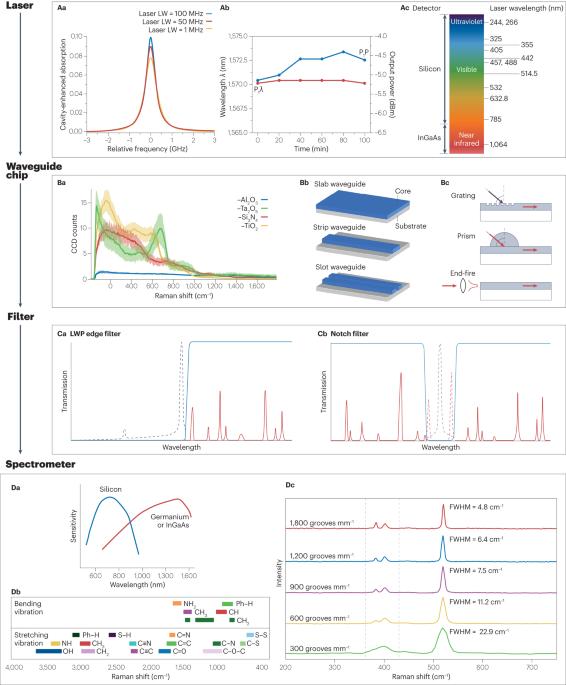Waveguide-enhanced Raman spectroscopy
IF 56
Q1 MULTIDISCIPLINARY SCIENCES
引用次数: 0
Abstract
Waveguide-enhanced Raman spectroscopy (WERS) exploits the electromagnetic enhancement that can be achieved at the surface of suitably designed waveguides to enhance the intensity of the Raman spectra of molecules close to the waveguide surface. This Primer describes practical aspects of WERS implementation including the choice of laser, choice of waveguide material, design and fabrication of the waveguides, coupling of light into and collection of light from the waveguide, and choice of spectrometer and filters. The methods for data collection and quantitative analysis of waveguide-enhanced Raman spectra are also described, together with the applications of WERS to problems in chemistry, materials science and bioscience. Issues of spectral reproducibility and key optimization factors are discussed together with a summary of technical limitations, current challenges and perspectives for future research. In many cases the material presented is supported by further, more detailed, discussion in the accompanying Supplementary Information. Waveguide-enhanced Raman spectroscopy (WERS) exploits the electromagnetic enhancement that can be achieved at the surface of suitably designed waveguides to enhance Raman intensity. In this Primer, Ettabib et al. describe methods for data collection and quantitative analysis of waveguide-enhanced Raman spectra.

波导增强拉曼光谱学
波导增强拉曼光谱(WERS)利用在适当设计的波导表面实现的电磁增强,来增强靠近波导表面的分子的拉曼光谱强度。本入门指南介绍了 WERS 的实际应用,包括激光器的选择、波导材料的选择、波导的设计和制造、波导的光耦合和光收集,以及光谱仪和滤波器的选择。此外,还介绍了波导增强拉曼光谱的数据采集和定量分析方法,以及 WERS 在化学、材料科学和生物科学领域的应用。还讨论了光谱重现性和关键优化因素等问题,并总结了技术限制、当前挑战和未来研究展望。在许多情况下,随附的补充信息中还提供了更详细的讨论,以支持所介绍的材料。波导增强拉曼光谱(WERS)利用在适当设计的波导表面实现的电磁增强来提高拉曼强度。在本入门指南中,Ettabib 等人介绍了波导增强拉曼光谱的数据采集和定量分析方法。
本文章由计算机程序翻译,如有差异,请以英文原文为准。
求助全文
约1分钟内获得全文
求助全文

 求助内容:
求助内容: 应助结果提醒方式:
应助结果提醒方式:


